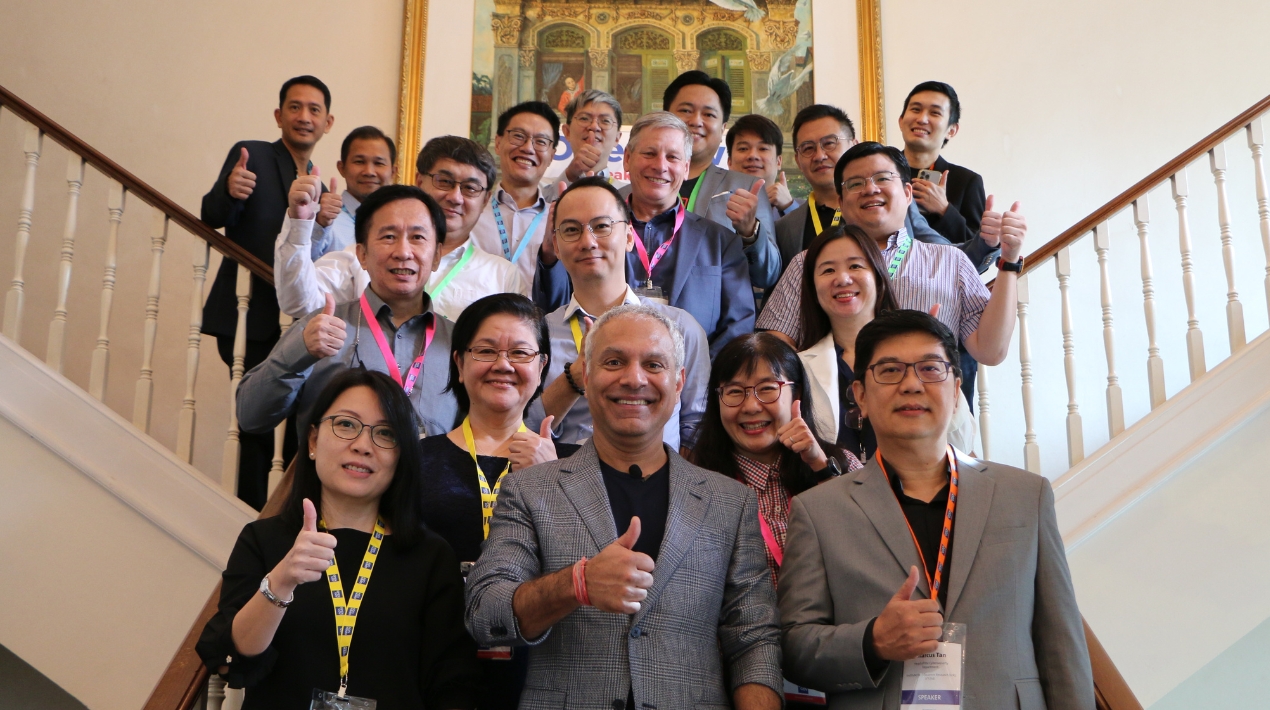
An organisation’s functions could be severely impacted by even a single incident. Organisations need rapid data recovery from the cloud, the edge and on-premises in the event of any type of disaster, be it a natural disaster, hardware failure, data breach or ransomware attack.
The knowledge that one is as well-prepared as possible provides some solace in the face of unforeseen calamities. With the right disaster recovery tools and procedures, it can quickly and easily restore data and workloads.
Hence, organisations need a plan to immediately get back to business as usual in the event of an interruption. Given the fast-paced nature of today’s IT environments, it is crucial to maintain a state of perpetual readiness.
Many businesses and organisations are left exposed to critical events – either man-made or natural disasters – as most fundamental systems have been shifted toward IT structures and applications.
While we can manage physical defence by using survival kits – which include emergency supplies, security, and insurance – not all firms can genuinely claim to have all bases covered. Especially in an increasingly digital landscape, where threats are virtual!
It may seem obvious to have an established disaster recovery plan, but due to the complexity of the outdated replication and recovery procedures, this is often overlooked. People might assume there is one and may have even talked about it but may overlook the most crucial step – documenting the plan.
Creatively assessing the possibilities for affordably safeguarding the data in a location apart from those dangers is vital. Despite data centres’ high level of security and frequent remote locations, creating a plan is now simpler than ever to implement using a cloud-based method.
The OpenGov Breakfast Insight on 10 November 2022 at InterContinental Singapore with Singapore’s top public sector leaders offered the most recent information on the benefits of disaster-proofing an organisation through speedy and efficient data security and recovery.
The Needs for Data Backup and Recovery

Mohit Sagar, CEO & Editor-in-Chief, OpenGov Asia believes that plans for catastrophe recovery must be in place for organisations adding that the traditional backup strategies have focused mostly on the first part of the backup and recovery process.
“The backup’s objective is to generate a copy of the data that can be retrieved in the case of a primary data failure,” Mohit explains. “A primary data failure might be the result of a hardware or software malfunction, data corruption, a hostile attack (virus, malware) or accidental deletion on the part of the user.”
Backup copies enable data to be restored from a previous point in time, assisting the organisation in recovering from an unanticipated event.
Data protection demands a secondary copy be stored in case the primary copy is lost or corrupted. This additional media can be as basic as an external drive or USB stick or as complex as a disc storage system, cloud storage container, or tape drive.
To achieve the best outcomes, backup copies should be made on a consistent, regular basis to reduce the amount of data lost between backups. The longer the time between backup copies, the greater the risk of data loss when recovering from a backup. Keeping several copies of data gives the security and flexibility to restore to a point in time that was not impacted by data corruption or malicious attacks.
In addition, a single accident or mishap might completely interrupt company operations, with significant consequences. According to reports, 93% of organisations that do not have disaster recovery coverage and experience a big data loss go out of business within a year.
However, with the correct tools and disaster recovery methods, organisations can restore their data and workloads fast and easily. Through advanced technologies, policies and standards, establishing layers of infrastructure protection and controls increases resiliency and security posture.
Monitoring the environment and intelligently managing data, via a single interface, is one of the disruptive solutions to ensure the best visibility across the data to quickly identify risk exposure and coverage, data availability and business continuity across on-premises and cloud settings.
“When the unexpected happens, you must be able to swiftly restore your organisation’s operations. It is paramount to constantly be prepared, especially given the rate of change in today’s IT landscape,” advises Mohit.
Welcome Address

According to Paul Lancaster, Director, Sales Engineering, Commvault, data is the competitive advantage in the modern digital economy. It generates corporate strategy, directs operational effectiveness, and forecasts consumer behaviour. “Data needs to be kept safe while still being always available.”
The problem is that the data is always changing and evolving as it expands, changes, and fragments into digital bits and bytes. Hence, the degree of an organisation’s success is directly correlated with how well they handle its data.
“In this situation, Commvault is useful. We support businesses in doing incredible things with their data. No matter where the data is located or how it is organised, our Intelligent data services can help these organisations become more efficient by changing how they protect, store, and use data,” Paul explains.
He advised organisations to always be prepared when calamity hits or whenever fraudsters attempt their best shot. Organisations should also be ready to take advantage of opportunities as they present themselves.
Further, Commvault offers flexibility in the deep integrations to:
- Connect (to Snaps/Replication via Intellisnap)
- Converge (roll new cyber harden backup infrastructure/stores with HSX)
- Cloudify (optimised stores for the cloud storage resources)
- Re-purpose (reuse existing open assets that still have a service life to the payoff from the prior investments)
Paul elaborated that their Control Plane offers comprehensive workload coverage coupled with key data management services to extend self-service roles so users can quickly and securely search and restore data. Data engineers working on a new analytics application can quickly call up a database clone to accelerate a new project.
Through hybrid cloud adoption, users can leverage cloud-based storage and realise the benefits of agile management, limitless scale, and cost savings of the cloud.
Commvault offers a comprehensive solution with deeply integrated workloads to simplify and future-proof. “We make the past more accessible and adaptable to the future faster and we span the solution across the customer’s full needs.”
Technology Insight

Marcus Tan, Head of the Cybersecurity Department, Institute for Infocomm Research (I2R), A*STAR believes that business continuity refers to an organisation’s preparedness to keep delivering products and services at predetermined, acceptable levels despite a crisis.
“Business continuity plans detail how a company will operate during and after a disaster,” says Marcus. “It may include contingency plans explaining how the company will continue to operate even if it must relocate. In addition, smaller interruptions, or minor disasters, such as protracted power outages, may also be included in business continuity planning.”
On the other hand, recovering from a catastrophic incident, such as a natural disaster, fire, act of terrorism, active shooter, or cybercrime, is referred to as disaster recovery. Recovery from a disaster entails the steps an organisation takes to respond to an incident and resume normal operations as fast as possible.
“Disaster Recovery is an organisation’s plan for resuming normal operations following a catastrophic event. This is an essential part of the Business Continuity Plan,” Marcus elaborates. “And, importantly, strategies should align with the organisation’s goals.
There are various issues to be considered in terms of protection and recovery strategy. These are compliance requirements, budget, insurance coverage, resources (people, physical facilities), management’s risk appetite, technology, suppliers and data and data storage, among others.
Business Impact Analysis is the systematic process to determine and evaluate the potential effects of disruption to business operations resulting from disaster, accident, or emergency.
Risk Assessment, on the other hand, involves having to identify, examine, measure, and mitigate/transfer risks. Hence, it is important to identify critical business functions to keep the organisation going during a disruption.
The purpose of the Disaster Recovery Plan is Getting Ready (pre-disaster), Continuity (during a disaster), and Recovery (post-disaster).
Some of the key considerations of the Disaster Recovery Plan are identifying critical business processes to continue the minimum desired level of operations during disruption. It would also identify key data, storage, network and apps to support critical business processes.
There must be also a consideration of compliance with regulations, recovery point objective, recovery time objective, establishing management succession, reporting structure, roles in the event of a disaster, and budget.
A Disaster Recovery Plan should be updated when a significant change to system architecture occurs; and if it has changed in system dependencies and recovery personnel as well.
“Tools are great for making your job easier, but they can never take the place of doing the things we need to do,” Marcus concludes.
Closing Remarks
Chua Chee Pin, Area Vice President – ASEAN, Hong Kong, Japan, Korea & Taiwan, Commvault highlighted that data is getting more and more in demand. “The balance between data democracy and security is so important, hence protecting your organisation’s data is complex.”
Everyone is now aware of the significance of data, both in their professional and personal life. Digitisation, cell phones, and Internet of Things (IoT) sensors all contribute to the ever-increasing amount of data. Utilising this knowledge is crucial for both company competitiveness and empowering individuals in their daily lives.
“Commvault’s data management and protection unify and safeguard data at scale across on-premises, hybrid, and multi-cloud environments for all workloads,” claims Chee Pin. “Advanced detection, multi-layer protection, and rapid recovery against security threats, such as ransomware and data breaches.”
Mohit highlights the importance of a digital partner. External partners can be a pillar of support while facing digital transformation procedures. They are available to assist every organisation with any project based on their demands.
“They can guide you through a much broader and more sophisticated process, as they possess the necessary expertise and experience,” Mohit opines. “Partnerships can save the organisation from making unneeded errors, thus saving time and money.”
















